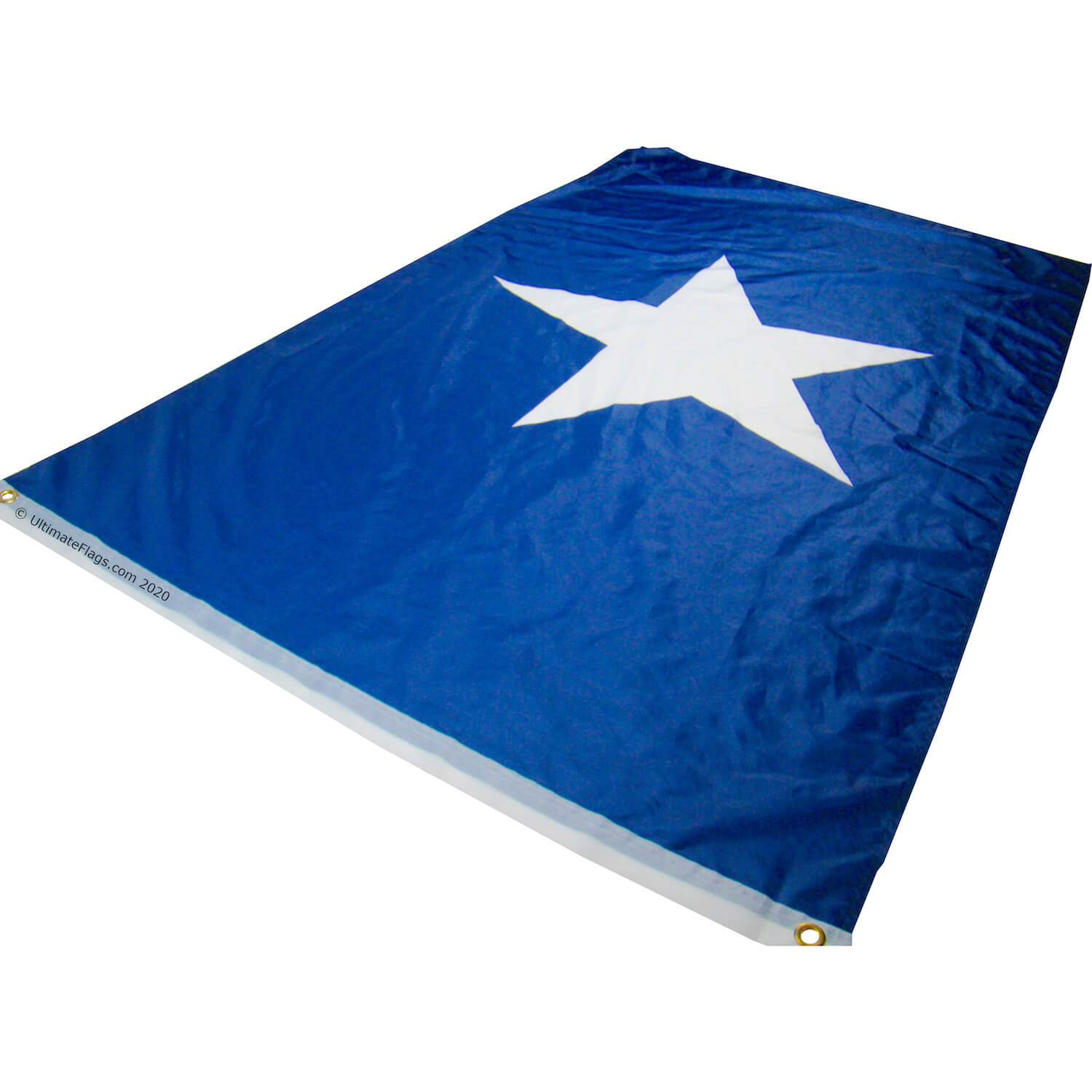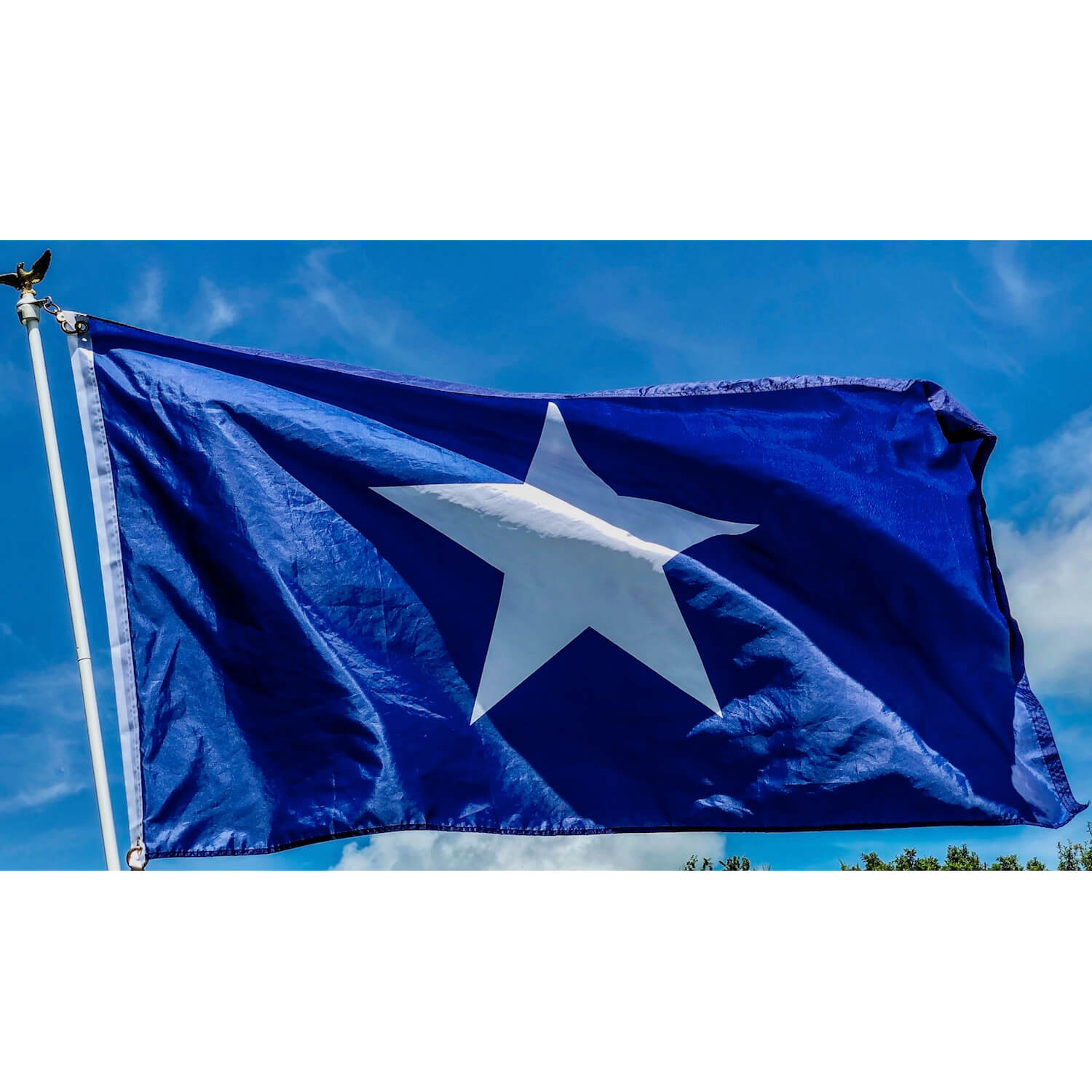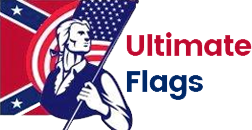

Bonnie Blue Flags for Sale
Simply Choose Your Size: 12×18 inch, 2×3, or 3 x 5 feet (most popular)
Material: Polyester
FLAG QUALITY AND USES
- Standard Quality
- Construction: Super-weave polyester
- Our most popular quality level
- 100% synthetic waterproof material
- Designs are through-printed and visible on both sides
- Bright, fade-resistant inks
- Double stitched edges all around
- Reinforced grommet holes with metal rings
- Attaches easily to any flag pole with grommets
RECOMMENDED USES:
- Fair weather outdoor display
- Light weight lets flags fly well even in light breeze
- Excellent for events, indoor display and theatrical use
- Seasonal decoration, home use
- Demonstrations, protests, parades
The Bonnie Blue Flag was an unofficial banner of the Confederate States of America at the start of the American Civil War in 1861. It now often serves as a representative banner of the southeastern United States in general.
The Bonnie Blue is also known as the “Lone Star Flag”, and first flew over the Republic of West Florida 1810. This republic was formed by the English speaking people of southern Alabama, Mississippi, and portions of Louisiana who rebelled against the reign of Spanish government and overthrew Spain’s provincial Governor in Baton Rouge. It reappeared in 1839 with Texas’ independence from Mexico, when the Republic of Texas adopted a variation of the Lone Star for its official flag. At the outbreak of the War Between the States, the Bonnie Blue became the flag of Mississippi after it seceded from the Union. It was immortalized by a song of the same name, and next to Dixie, no other song was more popular with the Confederate soldier. The Bonnie Blue Flag became the first unofficial flag of the Secessionist movement of the Southern States.
The Burnet flag is very similar but with a yellow star. In the 1936 novel by Margaret Mitchell and the film Gone with the Wind (1939), Rhett Butler names his newborn daughter “Bonnie Blue Butler” after Melanie Wilkes remarks that her eyes will be “as blue as the Bonnie Blue flag”. The flag has come to symbolize secession, self-governance and State Sovereignty.
The Bonnie Blue Flag: A Symbol of the Confederate South
The Bonnie Blue Flag, a lesser-known emblem from the Civil War era, holds a significant place in the history of the Confederate States and continues to be a symbol of the South.
The Origins of the Bonnie Blue Flag
Q: What is the historical significance of the Bonnie Blue Flag?
A: The Bonnie Blue Flag was first used in 1861 as a symbol of secession. It predates the more recognized Confederate flags, such as the Confederate Stars and Bars and other Confederate flags. Its simplicity, a single white star on a blue field, represented the secession of Mississippi from the Union, quickly becoming a symbol for the entire Confederacy.
Symbolism and Use During the Civil War
The flag’s design is straightforward: a solitary star on a blue field. This star represented the independent Republic of Mississippi initially and later came to symbolize each state joining the Confederacy. The Bonnie Blue Flag was used alongside other banners like the Confederate Stars and Bars during the Civil War, flown by army and navy units, and recognized by civilians and soldiers alike as a symbol of the Confederate cause.
Q: How did the Bonnie Blue Flag differ from other Confederate flags?
A: Unlike the later Confederate flags, which incorporated multiple stars and intricate designs, the Bonnie Blue Flag’s simplicity made it unique. Its single star was a clear statement of unity among the seceding states, standing in contrast to the Union’s flagpole adorned with multiple stars.
The Bonnie Blue Flag in Material Culture
Originally, these flags were hand-sewn, often using materials like cotton, silk, or wool. In contemporary times, reproductions of the Bonnie Blue Flag are typically made from modern materials like nylon or polyester for outdoor displays. However, Ultimate Flags also has the Bonnie Blue flag in cotton and in sewn double nylon, making them durable for historical reenactments or educational displays.
The Song: An Anthem for the South
Q: Why did the song “The Bonnie Blue Flag” become so popular during the Civil War?
A: The song’s popularity stemmed from its rousing melody and its lyrics, which encapsulated the sentiments of the Southern states. It spoke of unity, bravery, and the desire for independence, resonating deeply with those who supported the Confederate cause.
The Flag’s Legacy and Historical Context
After the Civil War, the Bonnie Blue Flag, along with other Confederate symbols, underwent a complex journey in American memory. While some view it as a part of historical heritage, others see it as a symbol of rebellion and the divisive issues of the Civil War.
The Second Life of the Bonnie Blue Flag
In modern times, the Bonnie Blue Flag has seen a resurgence in popularity, particularly in the South. It is often printed on various materials and used in Civil War reenactments, historical education, and as a symbol of Southern heritage.
The Bonnie Blue Flag remains a significant symbol of the Confederate South
Its history, intertwined with the events of the Civil War and the broader narrative of the United States, offers insights into a period marked by deep divisions between the North and South.
See the Full Collection of Bonnie Blue Flags Here!
We have this flag available in multiple sizes and qualities:
Polyester 12 x 18 inch, 2×3, or 3×5 feet MOST POPULAR!
Nylon Printed in 3×5 ft
Nylon Sewn & Embroidered in 2×3, 3×5, 4×6, 5×8 feet
Outdoor Heavy Duty Double Nylon Sewn & Embroidered in 3×5, 4×6, 5×8, & 10 x 15 ft Wow!
Premium Cotton in 12×18 inch, 16″x24″, 2 x 3, 3×5, 4×6, and 5×8 feet – Perfect for Re-enactments!
Premium Historic Cotton Flags Re-Enactment Quality with Pole Sleeve / Hem in 3×5 feet
Outdoor Heavy Duty Double Nylon Sewn Flags – with Pole Sleeve / Hem Ties in 3×5 feet
Bonnie Blue Cap
Bonnie Blue License Plate / Tag
Bonnie Blue Lapel Pin
SKU: [woo_sku]
Featured Products
Recently Viewed
You have not viewed any products yet.









